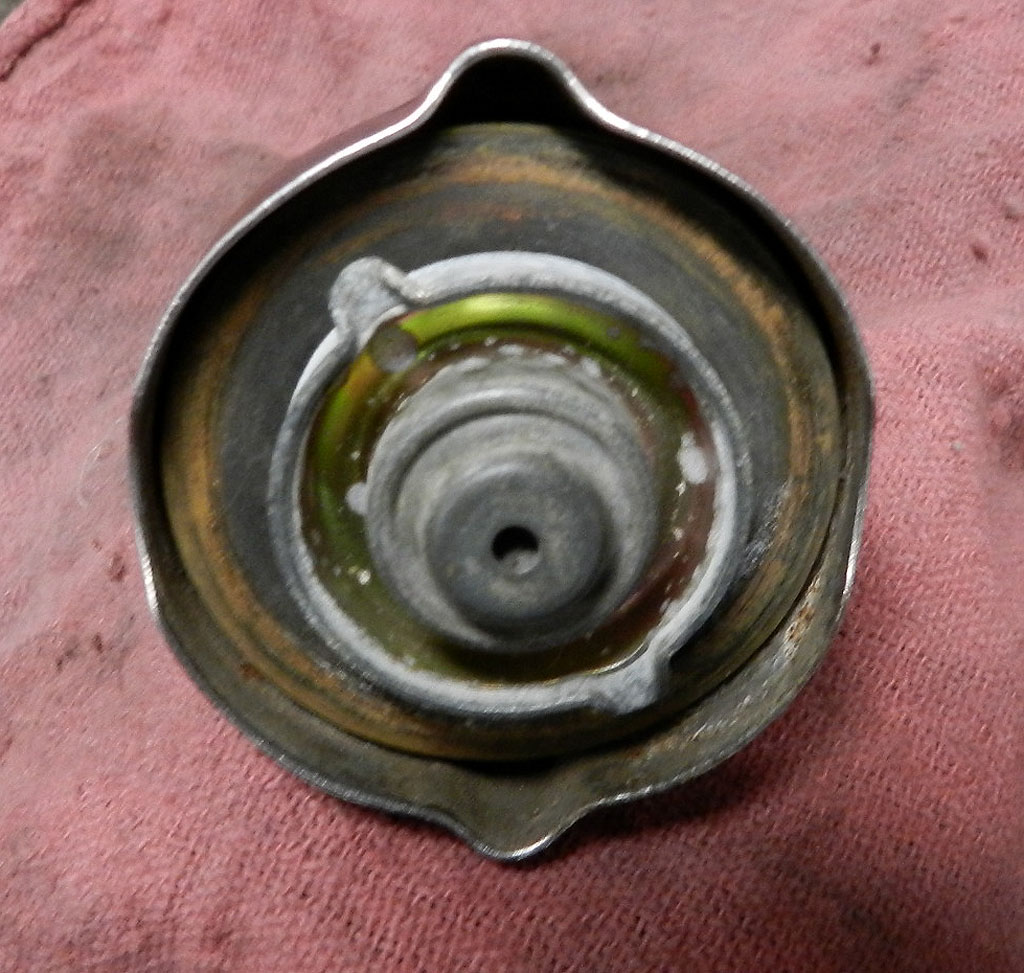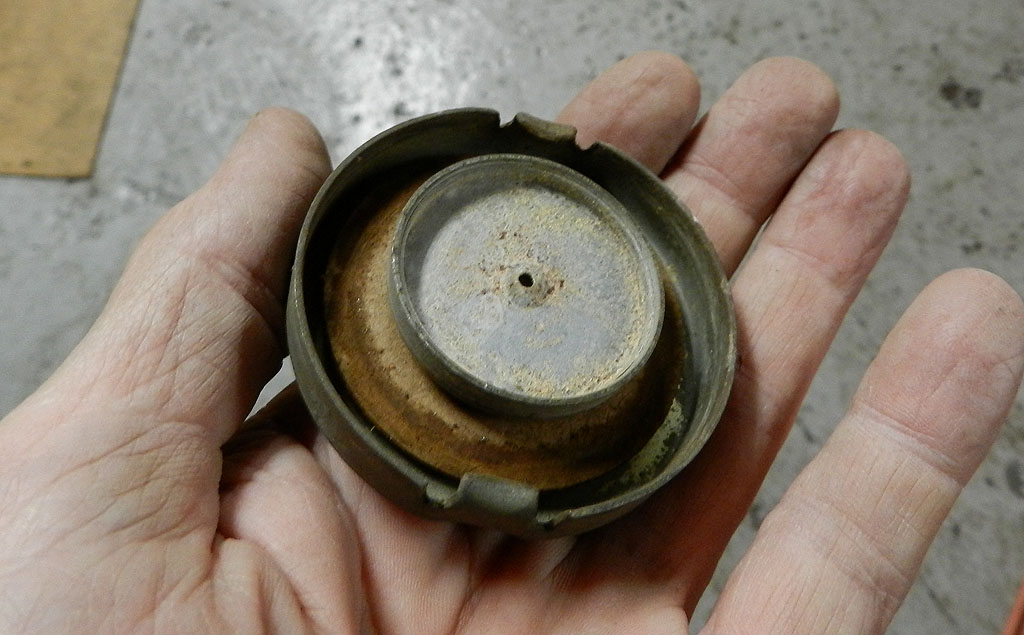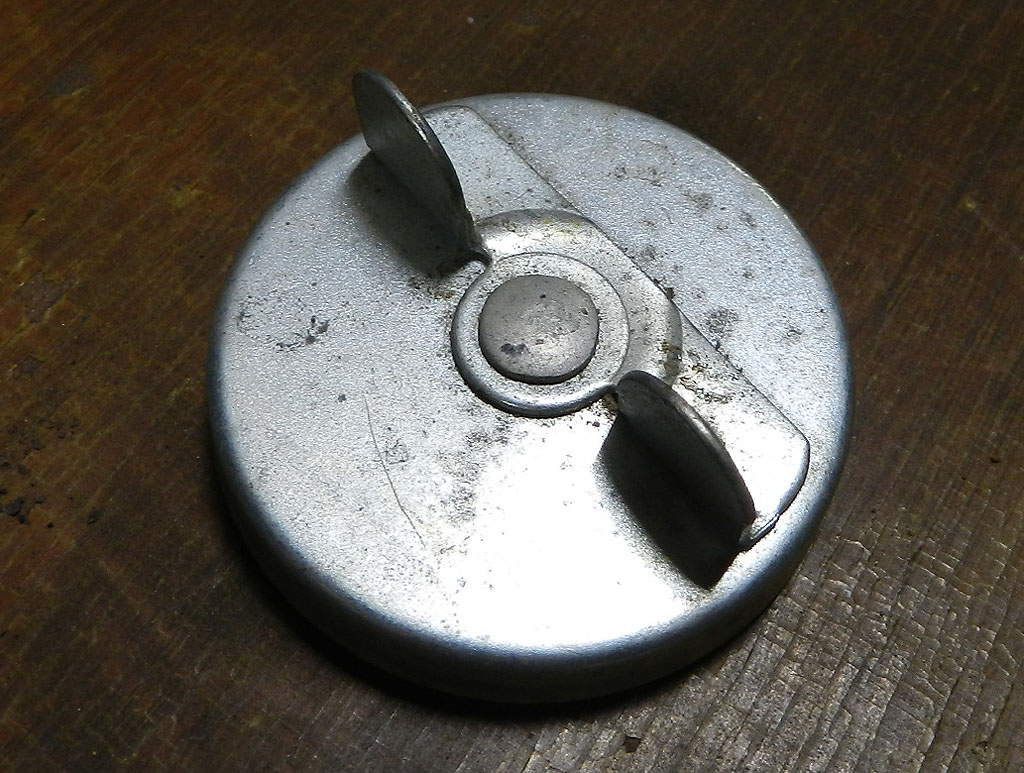Vent and Non-Vent Gas Cap

Modern version of a vented gas cap

Underside of modern vented gas cap.
With these caps, the vent is only one way ---
air is allowed into the tank but can not get out.

This is a 1956 vented cap. Note the center hole.

Underside of the 1956 vented cap.
With these caps, the air flow is both ways.

This is the filler neck from a 1956 300B.
The small pipe on the side is the tank vent.

This close up shows the tank vent connecting to the filler neck.
Because the tank vent is under the gas cap, the gas cap must be vented.

1956 300B

Old style non vented cap.

Old style non vented cap underside.
If we go back to the 1930s, most cars had gas tanks with no vents and used the old style vented cap.
By 1960 tanks have external vent tubes.
So does the F need a vented cap or not?
There is no mention in the service manual.
In my opinion it would not hurt to use a modern one-way
vented cap even on tanks with external vents.
Beyond the issue of venting,
there are at least three more differences in gas caps.
Note that the 56 cap is unusal in that it has the locking teeth on the outside of the cap.
Most caps have the locking teeth on the inner piece.
But then these caps differ due to the location of the locking teeth
-- -- some caps have the teeth further away from the cap
gasket.
The wrong cap either won't turn at all to lock
or will be so loose it is ready to fall off.
Click here for Dave Schwandt's gas cap summary.